In Alaska, Tribal Governments Push for Larger Conservation Role
Last August, after a long day at work, Karen Linnell tossed a couple of coolers and a bag full of dried moose meat into the back of her pickup truck. Her friend had caught a haul of chinook and sockeye salmon earlier in the day, and she and Linnell had decided to trade the moose for fish, which they would then distribute to tribal members in their villages. When Linnell set off on the five-hour round-trip drive, the sun was still high in the northern sky.
For generations, Native Alaskans have lived off the land in the Copper River Valley, a sprawling region of more than 24,000 square miles in south central Alaska. It’s home to caribou and moose, Dall sheep and bears, as well as the wide and snaking Copper River, which supports salmon and trout. Today, tribal members in rural areas still mostly hunt and fish to feed themselves. Linnell goes hunting each year in September. The time on the land, she told Undark, helps inoculate her against the stresses of modern life.
And these days, Linnell’s work causes considerable stress. Though the valley has long offered this seemingly limitless supply of food, natural beauty, and reprieve, things are starting to change.
Arctic and sub-Arctic regions are warming at least two to three times faster than the rest of the world. Salmon and caribou are in decline. And sport hunters from Anchorage and Fairbanks, both more than three hours away by car, are flocking to the valley by the thousands. Linnell, who is Ahtna and Tlingit by descent, worries that these pressures could take a toll on her people and their way of life. “The Copper Basin,” she said, “can’t feed the whole state.”
Ramping up local conservation efforts could help, but this isn’t straightforward. Conservation has long been a dirty word in the region, said Linnell, in part because past efforts — led by the federal and state governments — have locked Native Alaskans out of their traditional fishing and hunting grounds.
The 1964 Wilderness Act, for example, aimed to protect land in its natural state. While the legislation allows tribes to hunt in federally owned areas, it bars the use of motorized vehicles and equipment, which Native Alaskan communities had come to depend on before the law was passed. So when the U.S. government established the Wrangell-St. Elias National Park and Preserve within the Copper River Valley, Linnell recalled, her father lost the right to fly his small plane into the park to hunt moose, and he could no longer use a chainsaw to cut the dense black spruce for firewood inside the park boundaries.
Laws designed to limit sport hunting have also taken a toll on Alaskan Natives. A hunting permit typically allows just one moose per hunter. In tribal communities, however, sharing and trading are the norm. Around 30 percent of people produce 70 percent of the community’s total subsistence harvest, Linnell noted; those with the skills and needed equipment hunt and provide meat for the rest of their community.
Just over a decade ago, Linnell decided to step in. With the authorization of eight local tribal governments, she formed an organization to exercise sovereign authority and stewardship of cultural and natural resources within the supporting tribes’ traditional territory. The Ahtna Intertribal Resource Commission currently employs a GIS specialist, an ecologist, an anthropologist, and two biologists who help run several research and management projects that track wildlife and improve habitats for culturally important species.
The team uses cutting-edge DNA-sequencing techniques and is in the process of co-publishing a study that analyzes different approaches to monitoring bear populations. In addition to conducting research, they also are taking important steps to exercise sovereign rights for the Ahtna and other Alaskan tribes. In 2016, the organization reached a major milestone, when the U.S. Department of the Interior granted AITRC the authority to cooperatively manage the allocation and harvest of moose and caribou. The objective of the agreement, according to the formal agreement, is to “provide maximum opportunity for the continuation of the Ahtna tribes’ hunting way of life and right to self-determination.” The moose hunt is now a community harvest system, and registered participants may hunt for other participants in the system, which can mean they may hunt multiple moose in one year. This change has helped align hunting regulations with traditional practices.
As climate change and population pressure strain the world’s delicate ecosystems, Indigenous peoples are pushing to make a larger contribution to environmental management in Alaska and beyond by working with government officials and scientists. This kind of partnership is referred to as co-management, and governments around the world are increasingly receptive to it.
A 2021 review assessed the outcomes of 169 conservation projects led by a range of different governance types. The study found that projects where local communities and Indigenous groups were involved in the governance structure had better social and ecological outcomes than projects led by external entities. Roughly 56 percent of locally managed conservation projects reported positive outcomes for human well-being and conservation, compared to only about 16 percent of those that were externally managed. The study noted that “equitable conservation, which empowers and supports the environmental stewardship of Indigenous peoples and local communities represents the primary pathway to effective long-term conservation of biodiversity.”
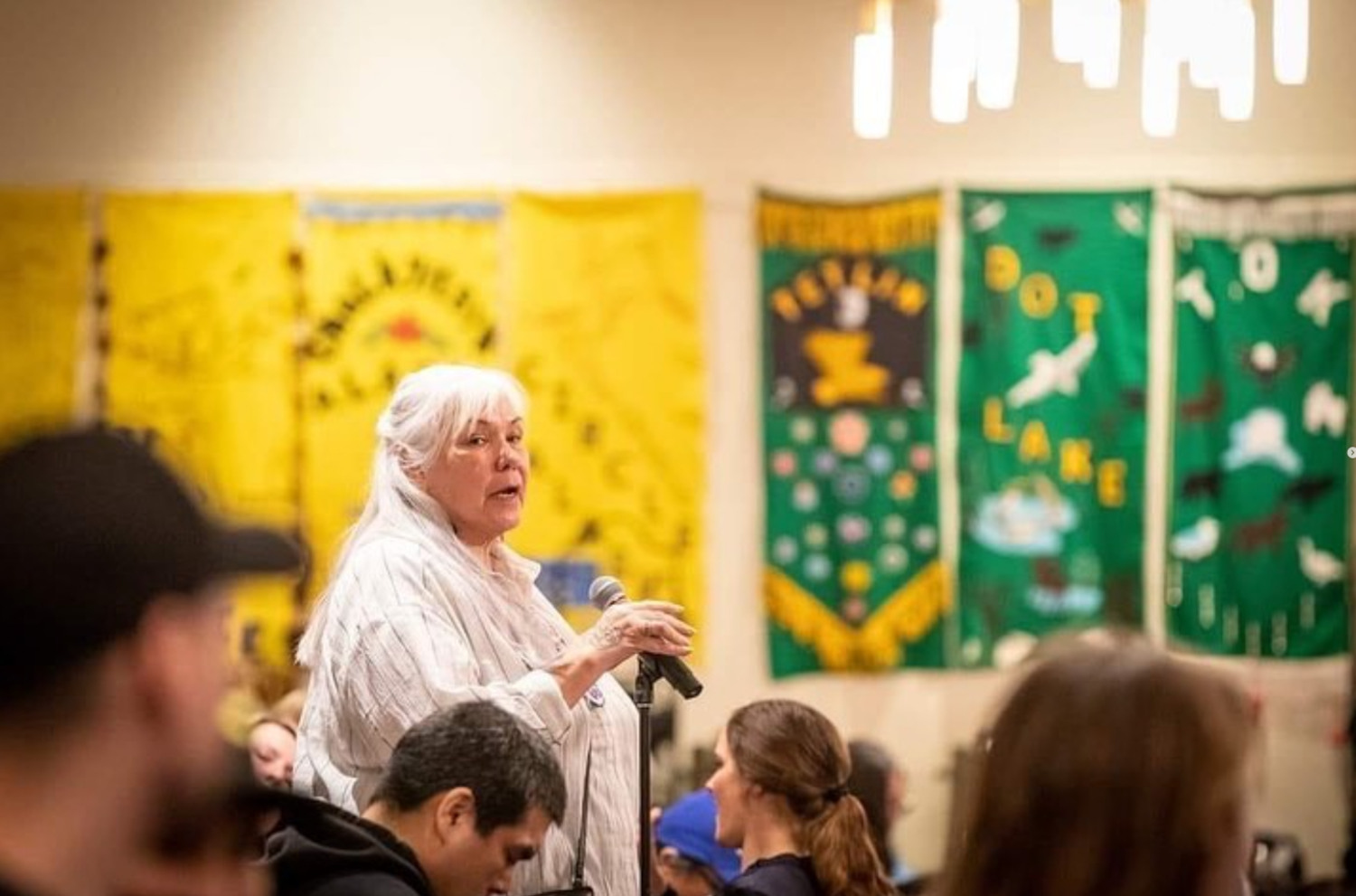
These findings, said lead author Neil Dawson, an environmental justice researcher at the University of East Anglia in the United Kingdom, come with a caveat: Some projects look good in writing — touting an equitable distribution of power — when in practice, Indigenous communities are often limited to secondary roles. “The pivotal point is not just that local people can participate in conservation, it’s not just that they can go to the meetings,” he said. “It is that Indigenous and local communities own the knowledge systems, values, customary institutions; and the way they manage land needs to be respected and recognized as a part of the governance itself.”
For Alaskan tribes, this distinction is existential, said Linnell. If the natural resources they depend upon disappear, she added, Indigenous communities will lose their food supply, social traditions, and cultural identity. She said she doesn’t want to fight over the last moose, caribou, or salmon. Many hope placing Indigenous people in leadership roles will help turn the tide, but experts like Dawson say that the policies have to be as good in practice as they are on paper.
For thousands of years, Native Americans hunted and fished freely on the land that would become the state of Alaska. In 1959, when Alaska joined the union, it was generally assumed that tribes would retain their land rights, as they had in the Lower 48 states. Instead, Alaskan Natives and the state government waged legal battles over boundaries.
Things came to a head in 1968, with the discovery of oil in Alaska’s northern slope. The U.S. government wanted to allow the building of a massive pipeline — but the project could not begin until the land disputes were settled. The federal government exerted pressure on the sparring parties and eventually a settlement was reached. In 1971, then-President Richard Nixon signed the Alaska Native Claims Settlement Act, which designated 45.5 million acres to Indigenous Alaskans.
But the act contained a major omission, said Robert Anderson, the current solicitor of the Department of the Interior. Unlike treaty agreements in the Lower 48, this newer legislation failed to protect Native hunting and fishing rights on government-owned lands. “There was an expectation that the state and federal governments would respect Alaska Native hunting, fishing, and gathering rights,” said Anderson. “But it didn’t happen.”
In 1980, the federal government attempted to fix the problem with additional legislation meant to protect subsistence hunting rights. It failed to protect Alaska Native hunting and fishing rights, however, by granting subsistence hunting rights to all Alaskan residents, with rural communities getting priority during times of shortage. From an Indigenous perspective, the newer law is highly flawed, said Kevin Illingworth, a tribal government and law expert at the University of Alaska Fairbanks. It was supposed to be a compromise to protect Alaska Native rights without discriminating based on ethnicity, but it simply gives too many people the right to hunt and fish, even when wildlife populations are crashing.
Additionally, members of the eight tribes who move outside of the designated subsistence hunting areas cannot visit home and participate in the moose and caribou hunts. “This is people’s life, their culture, their way of being, all of their spirituality, their worldview, everything revolves around this relationship with animals,” Illingworth said.
Linnell’s number one priority is food security for her tribe. When Alaska State Troopers call her office to say that a moose has been hit by a car, hunted but with parts leftover, or has been confiscated, she will leave in the middle of the day. She will recover what she can and take the animal to her house, where she cleans and butchers the meat herself. The head has some of the tastiest meat on the animal, she said, including the tissues behind the eyes, which she considers a delicacy.
When she’s done, it’s time to distribute the meat: Sometimes Linnell drives around, giving moose meat to people who need it. Other times, she invites Western scientists to give it a try so they can experience traditional foods.
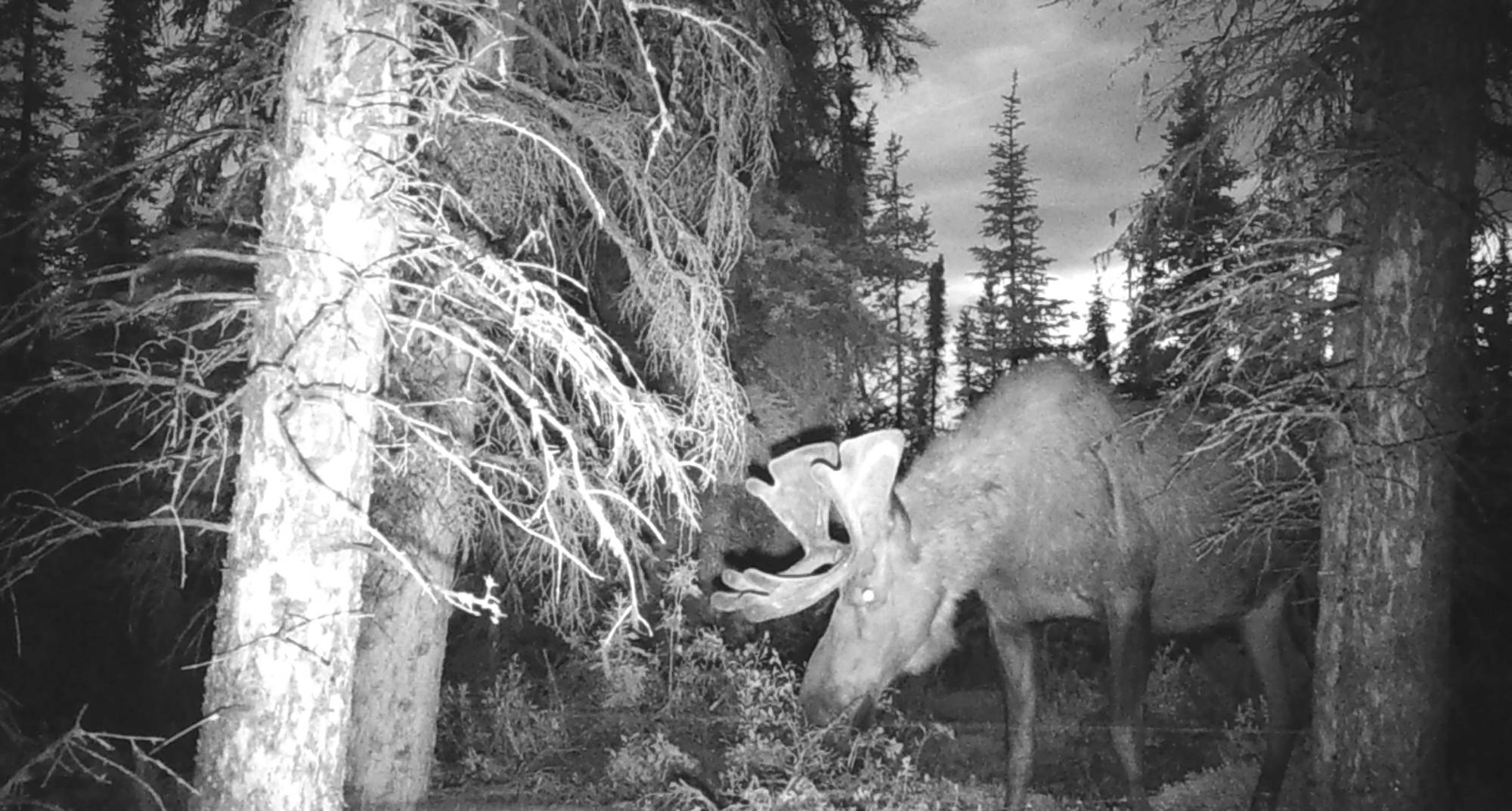
Hunting, however, remains tricky, and state and federal laws have brought a lot of suffering and confusion to Indigenous communities, said Linnell. Some members of her own tribe have been charged hefty fines and have even served jail time after failing to follow what they characterize as overly complicated laws aimed at conservation.
On state land, for example, a moose bull’s antlers need to measure at least 50 inches across, or have four points on each side, in order to be hunted. But on federal land, the restrictions can differ based on the region. So, if a hunter unknowingly crosses into a state-owned jurisdiction, they can be penalized for not following the antler size rule.
“It’s an ongoing joke here in Alaska that you have to have a lawyer and a surveyor with you, to be able to go out in rural Alaska,” said Illingworth.
More fundamentally, Linnell said, measuring bull moose antlers is not how Native Alaskans hunt: “Our people never measured, and we don’t look for trophies. We really feel that the animal gives himself to you, and we need to take it, and be blessed and thankful for it.”
The Ahtna Intertribal Resource Commission’s headquarters sit in a former dentist’s office on the main drag in Glennallen, a small town with about 400 year-round residents that serves as the last outpost before Wrangell-St. Elias National Park.
Linnell is not a scientist, but she sits on the board of directors of Ahtna Incorporated, the governing body of her Alaska Native Regional Corporation. When Alaska Native land claims were settled in the state, the government mandated the creation of 12 private for-profit Alaska Native regional corporations owned by Alaska Native shareholders. Ahtna, Inc. is owned by more than 2,000 shareholders, the majority of whom are of Ahtna Athabascan descent like Linnell.
She seems to know most people in the town, along with their families and backstories. Going anywhere with her takes double the time as she might have to stop and say hello to the innkeeper, or check in on the wife of the Mexican restaurant owner. She is also a pro with acronyms, able to easily recall and recite the various laws, governmental boards, and wildlife organizations. There is no shortage of acronyms in Alaska.
The idea to start researching bear populations struck her several years ago during an Ahtna, Inc. meeting. Linnell recalls an elder who shot up his hand and asked, “Why are we issuing permits for bear baiting when we don’t even know how many bears are on the land?” He was concerned the state was issuing hunting permits without good information about the population numbers, potentially resulting in overhunting.
When Linnell looked through the state’s bear census data to answer the elder’s question, she was disappointed to find that the available information was several years old. How, Linnell wondered, could the state know how many bears could be trapped and killed when the size of their population was unknown? The only way to get answers to their questions — and protect their precious resources — was to do the research themselves, Linnell concluded.
Today, the Ahtna Intertribal Resource Commission has about a half dozen full-time employees working on co-management and collaborative research projects. They use modern methods that complement Native Alaskan knowledge — mostly observations shared by members of the tribe. When someone comes to Linnell with questions about the local environment, she is now better positioned to get answers.
AITRC launched its first study on a small 26-square-mile area outside town. At the time, it was just Linnell and a biologist from Ahtna, Inc. To estimate the size of the bear population, they set up more than 20 monitoring stations called hair snares: homemade contraptions with a smelly lure surrounded by barbed wire. When the bears come to get a sniff, their fur gets trapped on the barbs. Researchers collect the fur and send it to an outside lab for genetic sequencing. The results can tell researchers how many distinct individuals are in a given area, and over time, the data can help researchers calculate the bear population’s size and growth.
The original pilot study has now expanded, covering roughly 19,000 square miles. Linnell hires seasonal staff to assist her biologists during the summer, when they go into the field to collect fur. A notable aspect of this year’s study, however, is AITRC’s new partner: the Alaska Department of Fish and Game. Fifty years after the state government went to court to contest Indigenous land claims, their conservation department is now working with a tribal organization to monitor bear populations.
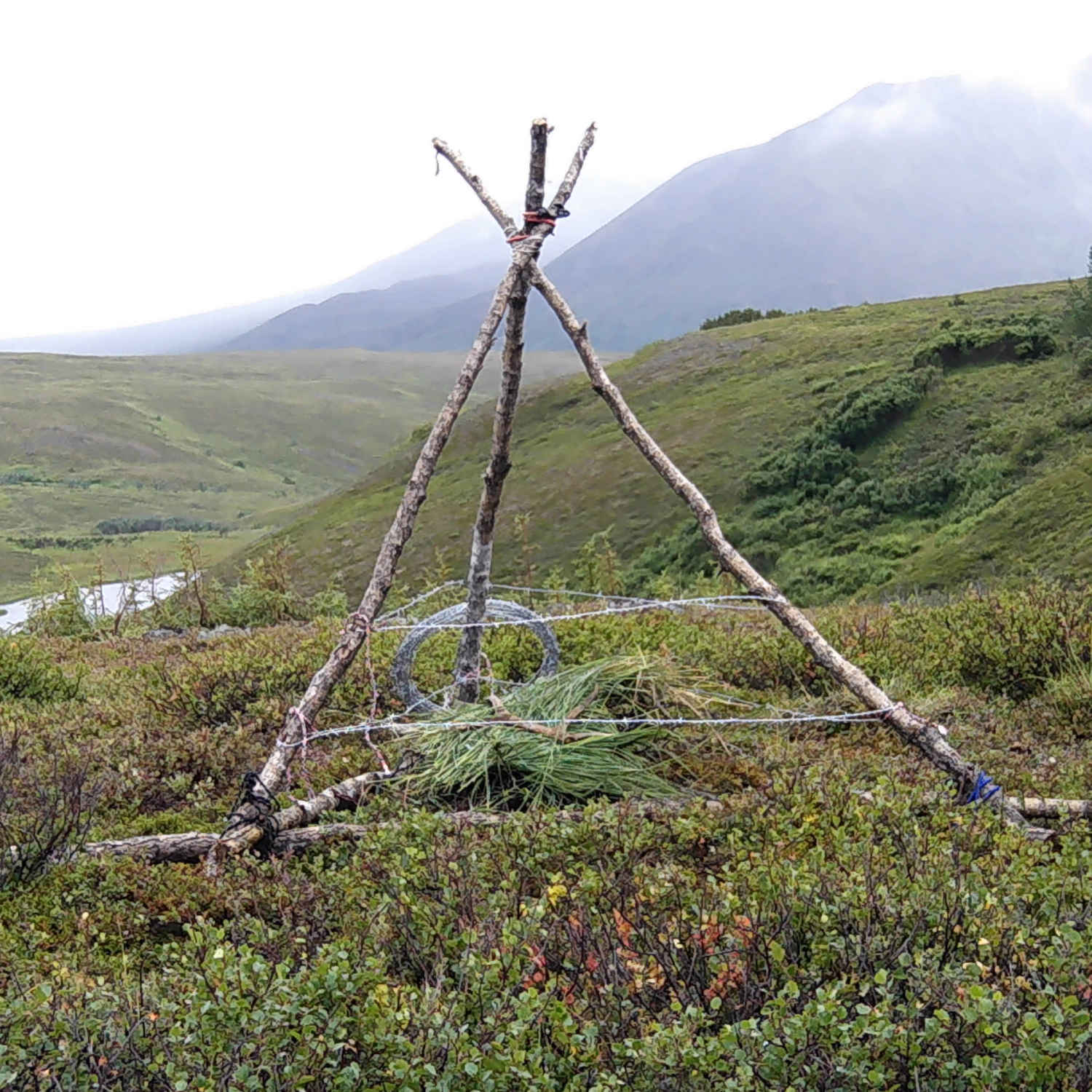
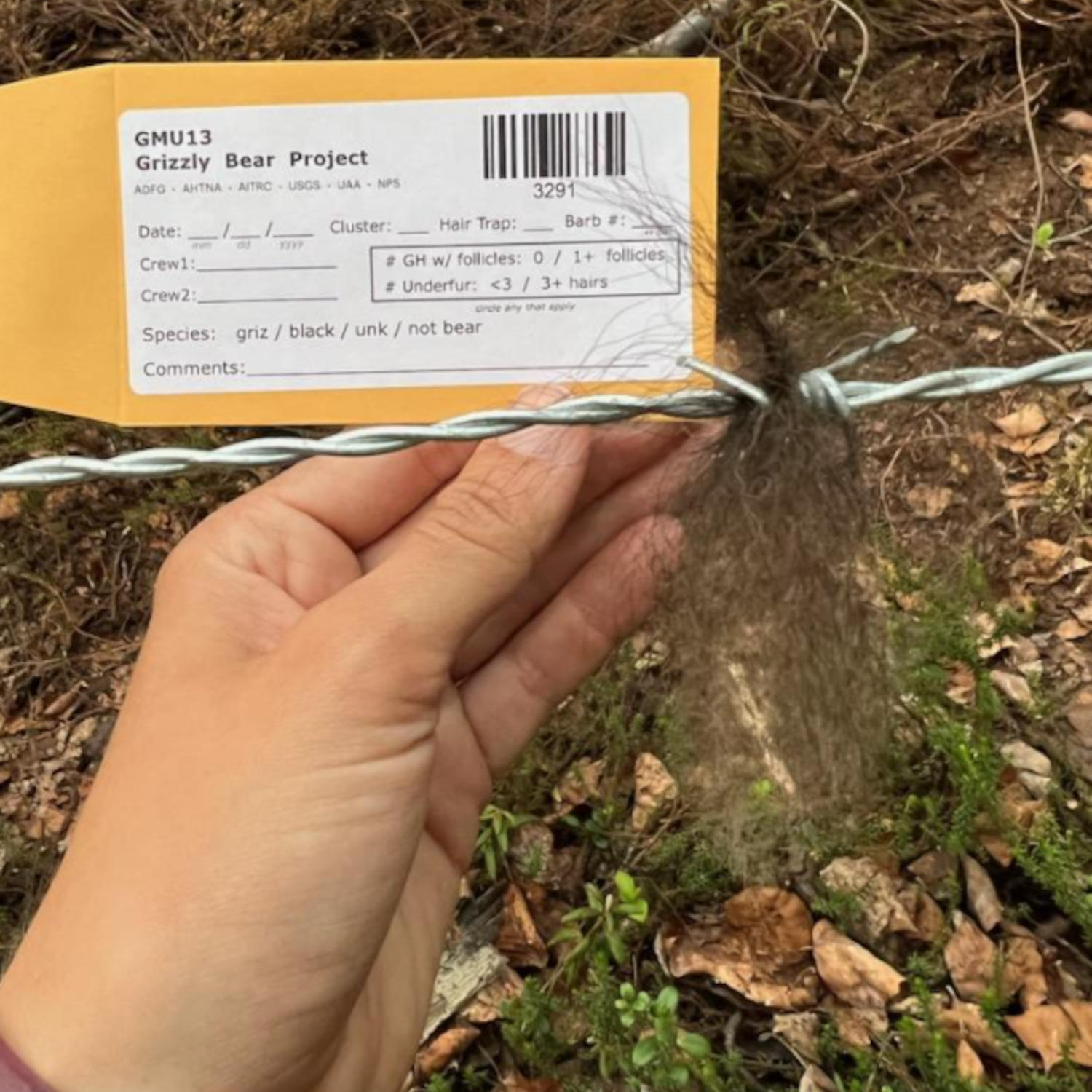
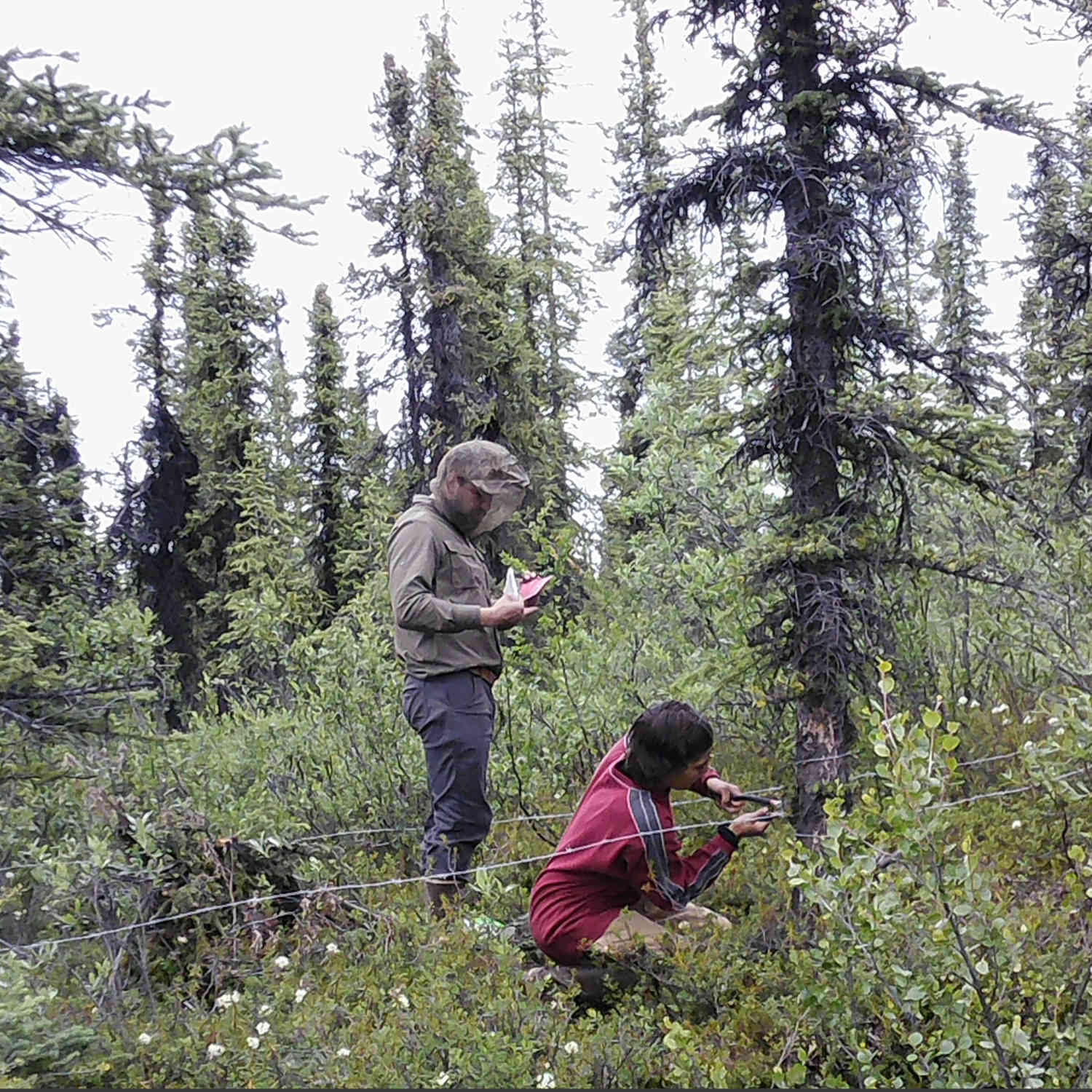
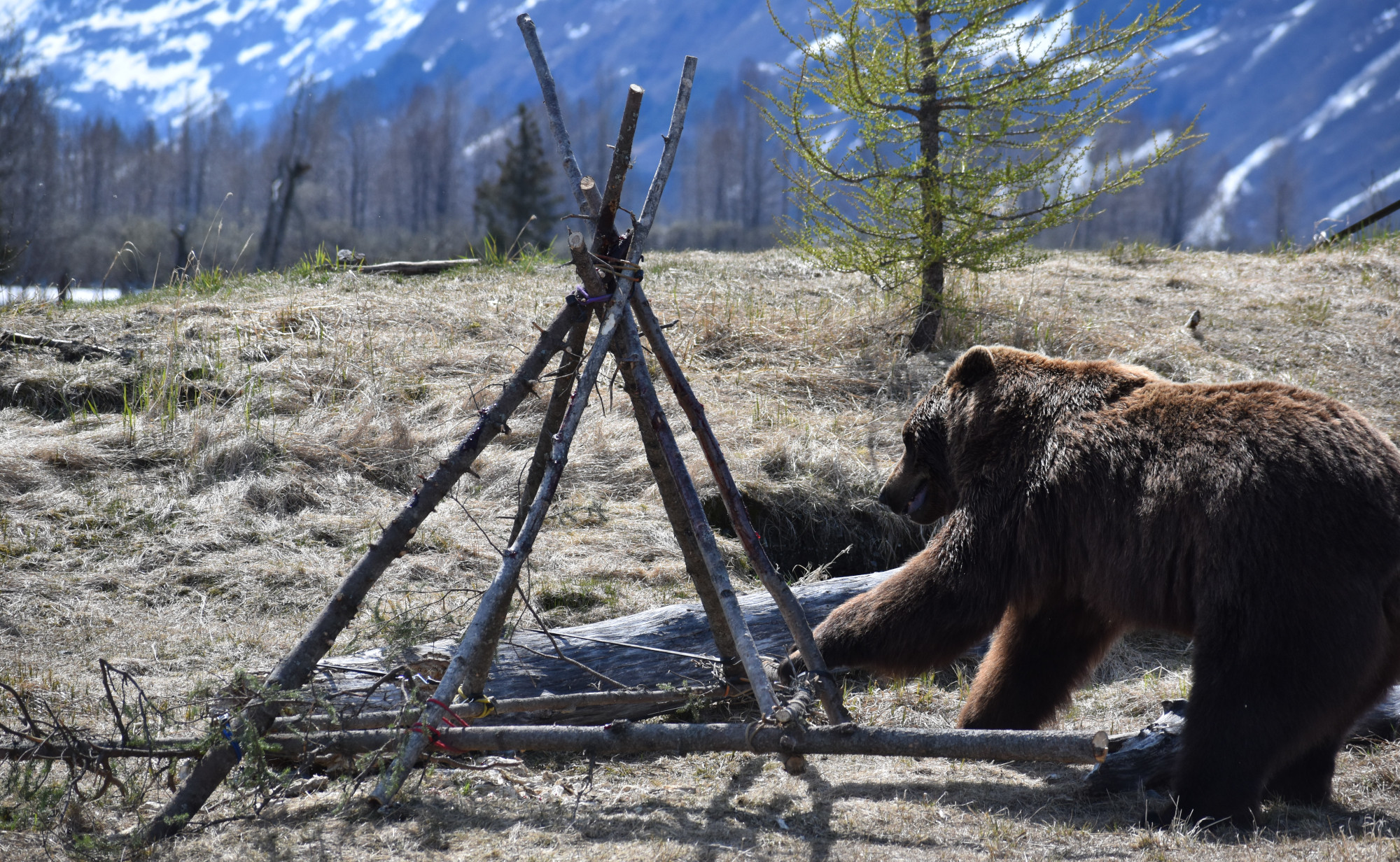
Jeff Stetz, a research coordinator for Region IV of the Division of Wildlife Conservation, which is part of the Department of Fish and Game, doesn’t remember how he first learned about Linnell’s work, but thinks it may have been through a rumor in his department. Word had it that an Alaskan Native group was using non-invasive genetic sampling for tracking animal populations. Stetz had been interested in techniques that don’t impact the animals since he was an undergraduate, and spent 15 years using them to study animal populations.
Stetz also thought that Linnell’s work could be useful to his department, which is tasked with monitoring animal populations and issuing hunting permits based upon the species’ current numbers. Such work can be costly and labor-intensive in a vast state like Alaska. If they were producing accurate data, said Stetz, then department resources could go to other projects. Stetz now works closely with AITRC’s research coordinator. Stetz says they split responsibilities for the project — such as finding funding, study designs, field work, and publication — right down the middle.
All of this represents a significant shift, said Linnell. In the past, she said, when tribal elders described changes in the local ecosystem to government officials, those officials would assume the elders were “whining or complaining.” Linnell has been trying to change this through Westernizing her data. “When we can quantify things using Western science,” she said, “and actually verify or true-up our traditional knowledge and long-term knowledge,” then government officials “are like, ‘Oh, okay, I see it now.’”
Collaborative research projects have taken off in other parts of Alaska, too. Farther north, in the city of Utqiaġvik, Alaskan Native hunters have been coordinating with scientists to study bowhead whales. In the late 1970s, a U.S. government survey found low numbers of the cetaceans in coastal waters — a finding that triggered a hunting quota of zero from the International Whaling Commission for the Native community, which had subsisted on whale meat for millennia.
The government surveyors had assumed that bowheads travel mostly in open water, but the local hunters knew that the marine mammals also travel under sea ice. With this in mind, the local community hired its own scientists to conduct a follow-up census, which found that the original survey had, indeed, produced an undercount. Since then, the local whale hunters have been working with scientists to better understand other aspects of whale behavior and anatomy.
Beyond Alaska, traditional knowledge has informed studies of everything from mercury pollution to crayfish populations to sea ice.
Linnell can’t help but wonder what other advances might be made if Native Alaskans were a part of more conservation research projects. Could Alaskans begin to understand why salmon numbers are crashing? Could they keep the moose population strong?
Not everyone agrees that these arrangements do enough to elevate Indigenous voices. The Ahtna Intertribal Resource Commission has “worked tooth and nail in their own homeland to gain minimal authority, to gain minimal decision-making power,” said Carrie Stevens, a professor in the Department of Tribal Governance at the University of Alaska, Fairbanks alongside Illingworth.
While Linnell has authority to register community members for the hunt, she is not involved with setting the hunting seasons or determining the total number of permits to be issued — both of which her research could inform. In addition, her authority doesn’t extend to Ahtna land, where environmental policy falls under the jurisdiction of the state. By and large, said Stevens, the state government remains reluctant to boost tribal voices in conservation management.
The federal government, meanwhile, has begun to shift in this direction.
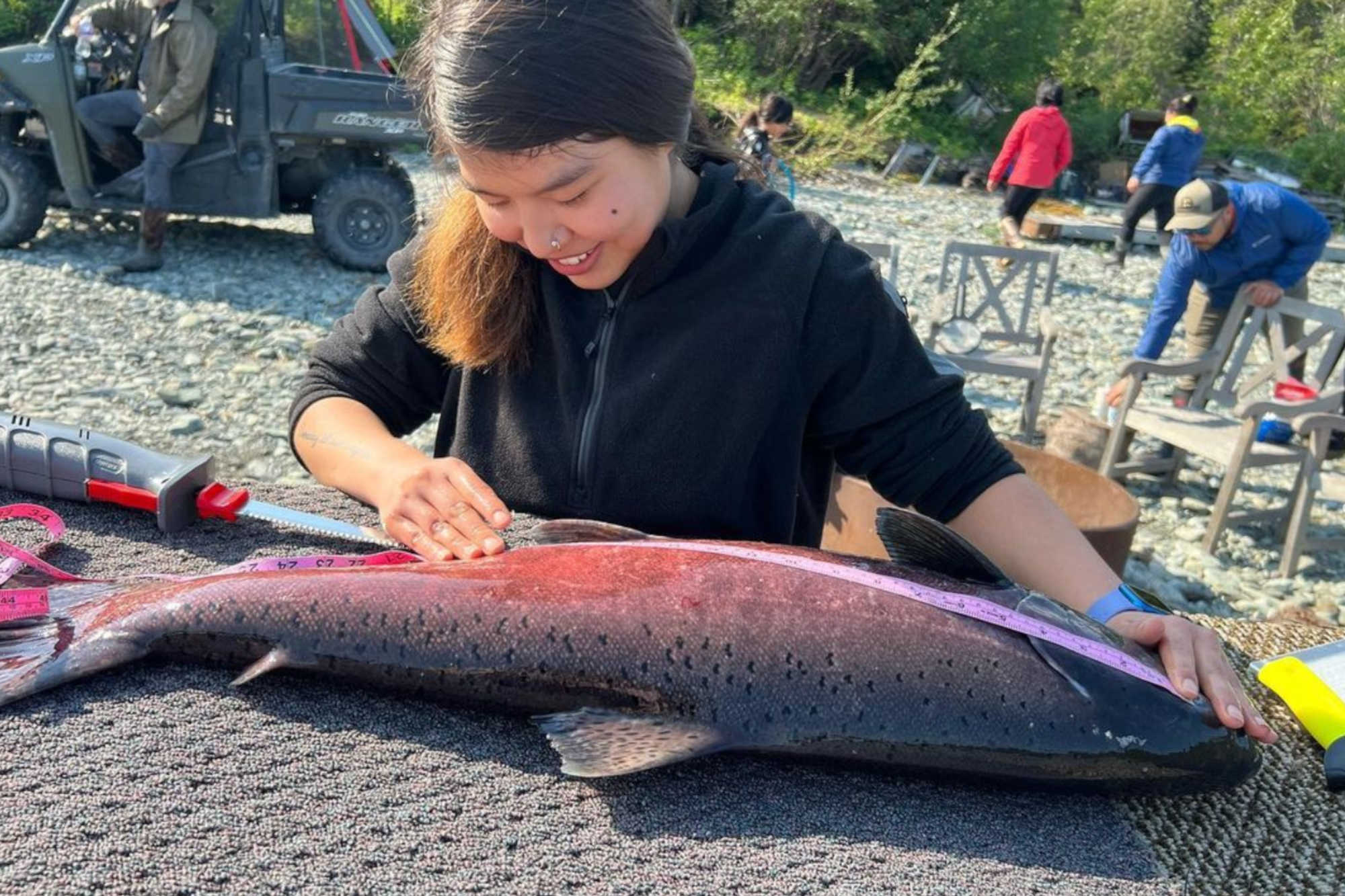
In 2021, President Biden issued the America the Beautiful Act, an executive order that promises “a decade-long challenge to pursue a locally led and voluntary, nationwide effort to conserve, connect, and restore the lands, waters, and wildlife upon which we all depend.” The order specifically calls for supporting tribal priorities. Biden has also appointed tribal members to leadership positions, with Deb Haaland heading the Department of the Interior, and Chuck Sams, heading the National Park Service. Many people interviewed for this story think these two historical appointments show a commitment to honor tribal leadership.
But despite this, said Stevens, there is still a lot of resistance to tribal leadership, even within federal departments — in part, she said, because of long-standing racism, but also because of perceptions held by mid-level managers: “Mid-level managers are trained in Western science, and they are trained in a way that delegitimizes Indigenous knowledge and Indigenous ways of knowing and Indigenous worldviews,” she said. For co-management to meet its full potential, she continued, some of these people will need to “relinquish that they know best.”
Kevin Washburn, dean of the College of Law at the University of Iowa, agrees. In a 2021 essay, he described several obstacles to implementing meaningful co-management agreements, including fear of disruption. Tribal contracts disrupt the status quo, he wrote, and threaten existing organizational power structures. “Disruption is rarely welcome to those who are disrupted. A new tribal contract will sometimes disrupt, and frequently will displace, existing federal workers,” he wrote.
Linnell knows this struggle well. It took her years to build trust and credibility with different agencies. She said she went back and forth, writing and re-writing proposals and attending quite a few meetings with different organizations including the Department of Interior’s Subsistence Board, which makes policy to specifically support subsistence fishing and hunting in Alaska.
Linnell hopes it leads to more cooperative management agreements or co-stewardship of resources in the future. One of AITRC’s main goals is to collect data that will better inform management of their fish and wildlife resource. She is well-aware that the path ahead is not going to be easy, but with regards to the success of co-managing moose and caribous hunts, she said:
“It is just the first step,” she said, in “being able to exert our sovereignty.”
These days, Linnell is also thinking about next steps, including the possible purchase of a former school building, which would serve as her group’s new and much larger homebase.
The modular classrooms, she said, could be transformed into temporary housing for research technicians. And the sports fields would be the perfect place to build greenhouses. Last August, she stood at the entry to the school’s gym, looking at a paper banner on its door. In colorful block letters, the long-ago art project read, “Never ever ever ever give up.”
She said, “I like that.”
Monique Brouillette is an independent journalist whose work has appeared in National Geographic, Scientific American, Nature, Science, and Quanta, among others.










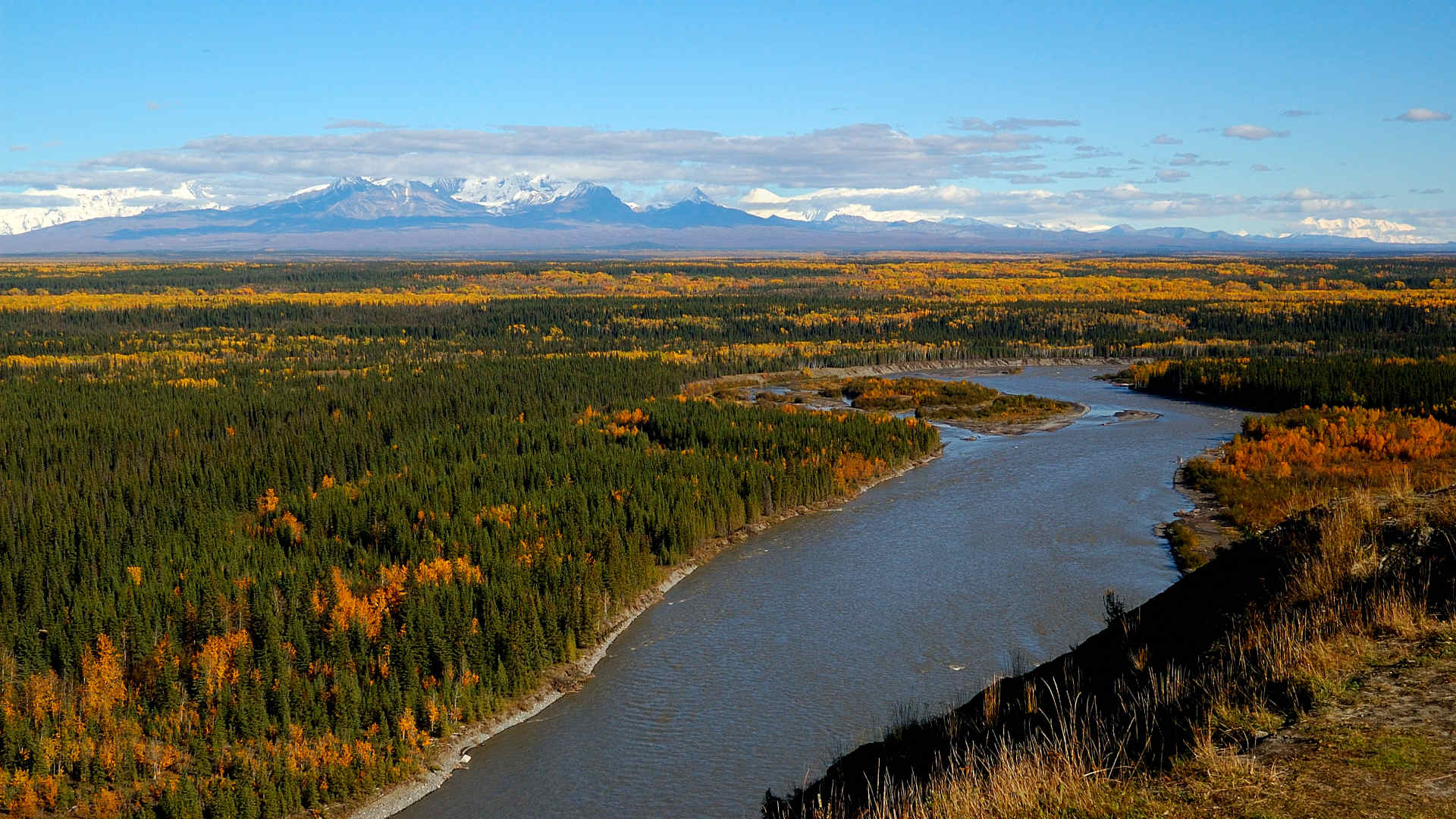
 This story was supported by the
This story was supported by the 